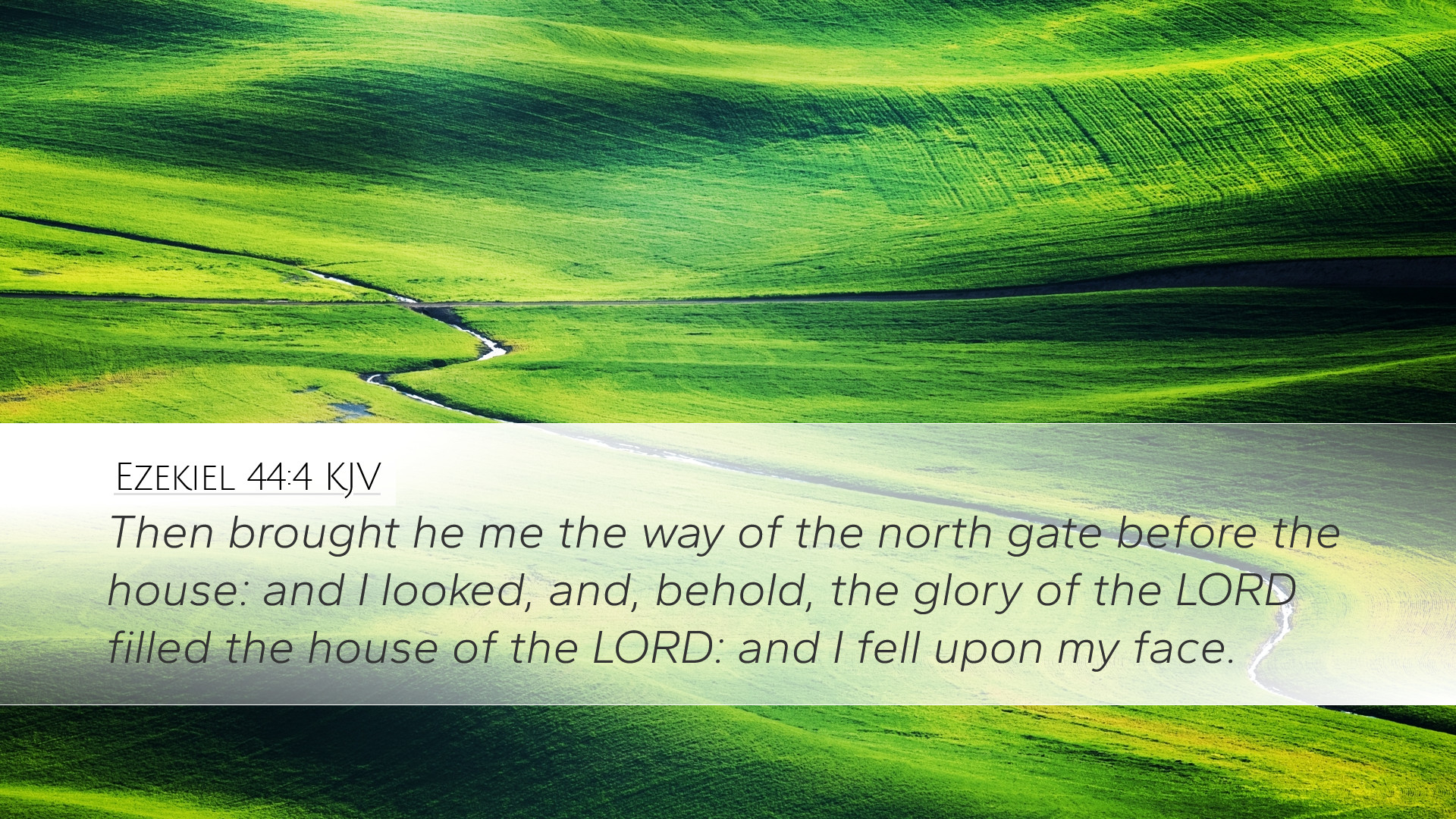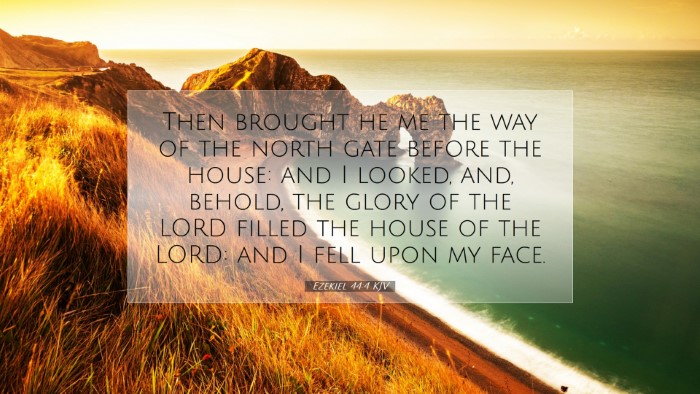Ezekiel 44:4 Commentary
Verse Context: Ezekiel 44:4 states, "Then he brought me the way of the north gate before the house; and I looked, and, behold, the glory of the LORD filled the house of the LORD: and I fell upon my face." This verse is part of a larger vision given to Ezekiel concerning the future temple and the glory of God that would dwell among His people.
Overview
This commentary synthesizes insights from several esteemed public domain theologians and exegetes, including Matthew Henry, Albert Barnes, and Adam Clarke. Each commentator brings a unique perspective, enriching our understanding of Ezekiel’s prophetic vision.
Theological Insights
-
Matthew Henry:
Henry notes the significance of the north gate in Ezekiel's vision, suggesting it symbolizes a new entry point for God’s presence among His people. He describes Ezekiel's overwhelming experience of the divine glory as a reminder of God’s majesty and holiness.
-
Albert Barnes:
Barnes emphasizes the revival of God's glory in the temple, which had been absent due to Israel's sin. He interprets the north gate as representing a place of judgment and purification, indicating the seriousness of returning to a right relationship with God through repentance and holiness.
-
Adam Clarke:
Clarke elaborates that the glory of the Lord filling the temple signifies God's acceptance of the worship of His people. He connects this occurrence to the anticipation of the new covenant, where God would dwell among His people in a more intimate and transformational manner.
Symbolism of the North Gate
The north gate holds rich symbolic meaning within the context of prophetic literature. Understanding its role can enhance one’s grasp of the divine narrative.
-
Judgment and Repentance:
Both Henry and Barnes illustrate that the north gate is associated with the coming judgment and a call to repentance. It serves as a place where God's presence confronts sin, inviting the faithful to return to Him.
-
A New Beginning:
Clarke refers to the north gate as a new beginning, akin to how Christ opens the way for believers to access God's presence. This drawing near encapsulates the heart of God’s salvation plan throughout the ages.
The Glory of the LORD
The manifestation of God's glory is a pivotal theme in Scripture, and Ezekiel’s encounter highlights several aspects of this divine attribute.
-
Divine Presence:
Henry underscores that the glory of God filling the house signifies His presence being restored among His people, contrasting their prior exile where God's glory had departed.
-
Reverence and Awe:
Barnes points out that Ezekiel's reaction of falling on his face illustrates the appropriate response to God’s holiness. This calls believers to a posture of humility and worship before the Almighty.
-
The Transformative Power of God's Glory:
Clarke asserts that the presence of God's glory is transformative, indicating that true encounters with God lead to spiritual renewal and a deeper commitment to righteousness.
Implications for Today’s Believers
The implications of Ezekiel 44:4 extend far beyond its historical context, offering valuable insights for contemporary believers.
-
Seeking God's Presence:
As seen in Ezekiel's vision, there is a longing for God’s presence that should resonate within the hearts of modern believers. The pursuit of holiness is paramount in experiencing God's glory.
-
Understanding the Importance of Worship:
The glory of God filling the temple underscores the importance of corporate and individual worship. When believers gather in sincere worship, they create a space for God to inhabit, similar to the temple described by Ezekiel.
-
Call to Repentance:
The mention of the north gate signifies a call to repentance, reminding the church of the necessity to maintain a pure heart before God, actively turning away from sin in order to draw nearer to Him.
Conclusion
In Ezekiel 44:4, the dual themes of the north gate's significance and the manifestation of God’s glory converge to inform not only the expectations for the future temple but also the present spiritual landscape of the believer. As students, pastors, and theologians explore these themes, they discover timeless truths that elevate worship and inspire a life marked by holiness.


